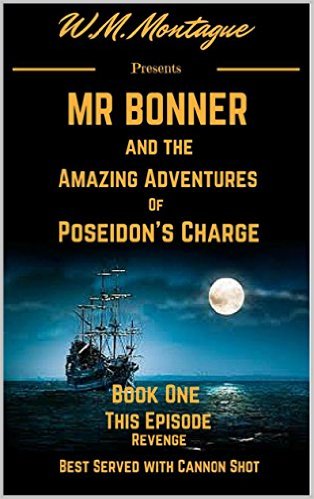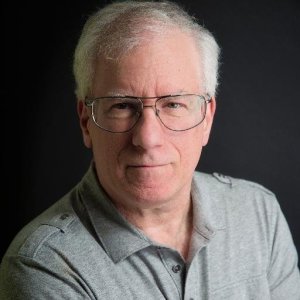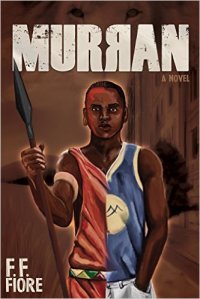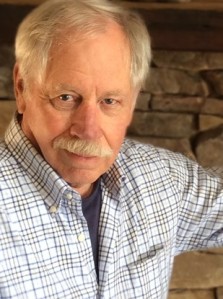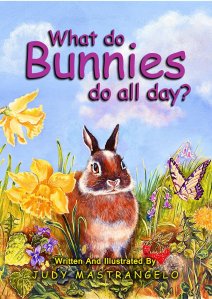It’s a rare day when you can Hollywood actor Alex Cord, Hollywood writer Cliff Roberts and Western super-seller John D. Fie. Jr in the same room for a chat. This is their latest interview together and it’s a good one… do you need more proof? Well let’s roll down and see what these giants have to say.
John D. Fie, Jr.
One of the most successful Western authors of his generation. His hits include the multi-million selling “Blood on the Plains,” “Luke Pressor: U.S. Marshal,” and “Incident at Benson’s Creek.”
Cliff Roberts
A multimillion book selling powerhouse who has turned out hit, after hit, after hit. His latest is called “Draw!” His other million sellers include “Reprisal: The Eagle Rises,” “Reprisal: The Gauntlet,” “Connor Slate: Bounty Hunter,” “Ambushed” and many others.
Alex Cord
The legendary actor and star of TV’s “Airwolf,” who has scored award-winning hit novels like “A Feather in the Rain.” His latest novel is called “High Moon at Hacienda del Diablo.” “A Feather in the Rain” is currently being considered as a movie.
Welcome to this interview Alex, John and Cliff. How are you all today?
Alex: Feeling pretty good—thank you for having me.
John: Great to be with you.
Cliff: Greetings!
Cliff, let me start with you. You seem eager to start. Are you ever surprised by how many Western readers there are in the world?
Yes, I was surprised at the number of people who currently read Westerns. At first, I thought it was one of the niche genres and that Westerns had pretty much faded into history. I was wrong.
The Western readers are great, friendly and loyal to a fault. I greatly appreciate their patronage. Thank you for reading my work, and I’ll endeavor to make each new book better than the one before.
John, I think this is a good question for you. With your novels constant favorites, perhaps you can explain to us why Westerns are still so popular?
As surprised as people are at the success of Westerns, I’m really not. I’ve always enjoyed the West, and I know many others have, too. I think there’s a lot of hype when it comes to romance, erotica and horror—but the Western fan base is just as busy buying the books they want.
I guess you can identify with that, Alex. As someone who has been writing and making Western movies—let me ask you this one: Do you prefer writing (and acting) the heroes or the villain characters?
I prefer to write about human beings and discover who and what they are. There are elements of heroes and villains in all of us. Shakespeare wrote entire plays about one element of humanity. Evil: Richard III; jealousy: Othello; heroism: Henry V. I like to delve into the depths of an individual and see what I can find.
Interesting—but it’s the title that sometimes draws the reader in before they’ve even discovered the writer. John—let me ask you this: How did you come up with the title of your “Blood on the Plains” novel?
Well, I was looking at a photo of the Kansas Plains and thought about how it must have been back then, with the first wagon trains crossing the plains and facing a vast nothingness in all directions. Then, the thought of Indian attacks and the blood that must have been spilled making that crossing. As I looked over more photos, the story was forming in my mind. I then came up with the title Blood on the Plains.
Did you have a different experience with “Luke Pressor: U.S. Marshal?”
Luke Pressor, U.S. Marshal is a story in itself. I was asked to publish a short story by Outlaws Publishing. I looked through the short stories I had written over the years, and I just couldn’t make up my mind. Then I thought, why not combine a story or two?
From the outset, it became a challenge. Luke Pressor became the hero of the story. This is how it became Luke Pressor, U.S. Marshal.
It’s interesting how things develop. Cliff—let me ask you this: Do you think part of the appeal of Westerns comes from the fact that they mirror the American way of life?
I think Westerns are the basis of the American way of life. The good guy is always honest, sometimes to a fault; and he believes in fair play, family and doing an honest day’s work for an honest day’s pay. In the Westerns, good triumphs over evil without exception.
And Alex—which Westerns do you think have really affected your life?
Red River, Lonesome Dove, Monte Walsh, The Westerner, Stagecoach, My Darlin’ Clementine, The Wild Bunch, One-Eyed Jacks. I list them not in order of preference. They are all fine films that I have seen more than once, some more than three or four or five times. Any of John Ford’s films. John Wayne, Ben Johnson, the great Gary Cooper, Walter Brennan, Slim Pickens, Marlon Brando, Karl Malden. These are the finest of the fine.
John—I suppose part of the appeal of the Western comes from the covers chosen by authors and publishers to illustrate the book. What has your experience been like with covers?
Blood on the Plains, at first, had a very bland looking cover. I had a contract with a different publisher at the time. The book wasn’t moving. Outlaws Publishing took a look at the book and the cover. It wasn’t until I signed with Outlaws Publishing that the book was pulled from the market. The book was re-designed, and I immediately saw the difference. The book, with the new cover design, just jumped at you. I knew right then I had made a good decision going with Outlaws. They specialize in the Western genre. Luke Pressor, U.S. Marshal also had two different book covers. Several covers were designed, and we put our heads together and again came up with a colorful book cover with eye appeal.
I think you have some of the best covers around, John. Cliff—you signed a contract with Outlaws Publishing after being both traditionally published and self-published. Do you think a larger publisher is important? Is it a step towards success to garner a large publisher’s interest?
I think it is important to have a good publisher, no matter in which genre you write. I’ve had several publishers who failed big time at actually helping me or being part of my team for success. The larger, well established publishers seem to be out for the almighty dollar and that alone. Your success as a writer doesn’t matter to them, other than they get more money. If you’re asking who I’d consider publishing my Western novels, I’d say use Outlaws Publishing. That’s who I use. They will treat you right, and they really want you to be a success and place their success secondary to yours. Outlaws has several divisions, so they can help you publish in almost any genre. If you’re looking for a publisher, send your manuscript to Outlaws and see if they can help you. Oh, yeah, they don’t charge you to up front to publish your book and are extremely fair on royalty splits.
John—what do you do differently to other authors when writing a Western?
I like to use small, quick one-liners in my stories to add a little comedy. Also to have a few characters who are somehow different from the others.
I think that’s an important part of being human, John. It’s a shame more writers can’t attempt to inject human characteristics into their books. Alex, let me ask you a similar question. What real life inspiration do you draw from people you know when writing your books?
My life is filled with experiences with all kinds of people. A rich bank from which to draw truth. Most of my characters are either based on people I know or have elements of them. I have made a practice of acquiring characters throughout my life and studying them. A creative artist, writer, actor, painter, dancer, musician, must be intensely curious, perceptive and interested.
Cliff would you agree with Alex? And would you go back to the West if you could?
I would agree with Alex. And no, I don’t think so. Whereas part of the Old West seems romantic and peaceful, it was a very dangerous place. Knowing me as I do, I’d probably end up having to learn to be a gunfighter and fast because I don’t take injustice well. I’d be out there trying to stop the lawlessness and probably get shot dead. Maybe I’d even become a historical figure if I did. The quickest lawman to get killed.
John—what would your one piece of advice be for a young author?
For new writers, make sure you get an editor. You can’t edit the book enough. When you’re ready to publish, look around and choose wisely, then stand by for the reviews.
I think that’s great advice. Alex, did you learn anything from writing your latest Western?
I did. That writing is fun, challenging and bloody hard work. Many people say they would like to write a book, and I believe that everyone has a book in them. Getting it out from within and onto blank pages is another matter. It requires huge belief and relentless commitment.
What a learning process. Cliff, what do you think is the key to success?
Good writing, good promotion and making sure you surround yourself with those who will help you, rather than hinder you. A good publisher, publicist, and editor will make you as an author. A poor publisher, publicist, or editor will break you. I need say no more. Invest in yourself, your product and hire a good publicist.
And John—what does it feel like to be one of the top authors in the business?
It feels pretty good. It’s good to know that somebody is enjoying your story.
Check out the latest books from these three great authors.

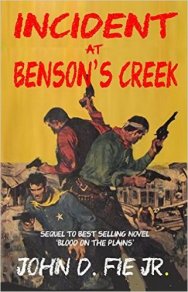
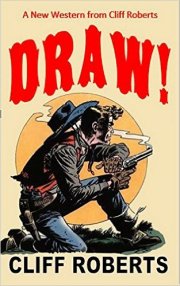
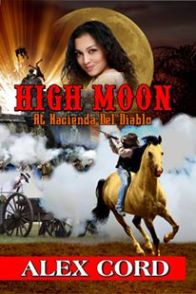
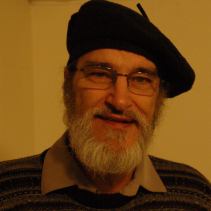 “MAN O’ERBOARD!” Some of the crew along with Mr. Jenkins and Mr. Bonner gather on the starboard side, straining to get a better look. Mr. Jenkins pulls out his spyglass trying to locate the survivor, finding him he points in that direction offering his spy glass to Mr. Bonner. The Captain is busy watching the debris with his own. Sure enough there is someone. He’s hanging on to a piece of wreckage with one hand. Getting closer they see he is also holding on to another survivor, trying to keep his head above the waves.
“MAN O’ERBOARD!” Some of the crew along with Mr. Jenkins and Mr. Bonner gather on the starboard side, straining to get a better look. Mr. Jenkins pulls out his spyglass trying to locate the survivor, finding him he points in that direction offering his spy glass to Mr. Bonner. The Captain is busy watching the debris with his own. Sure enough there is someone. He’s hanging on to a piece of wreckage with one hand. Getting closer they see he is also holding on to another survivor, trying to keep his head above the waves.